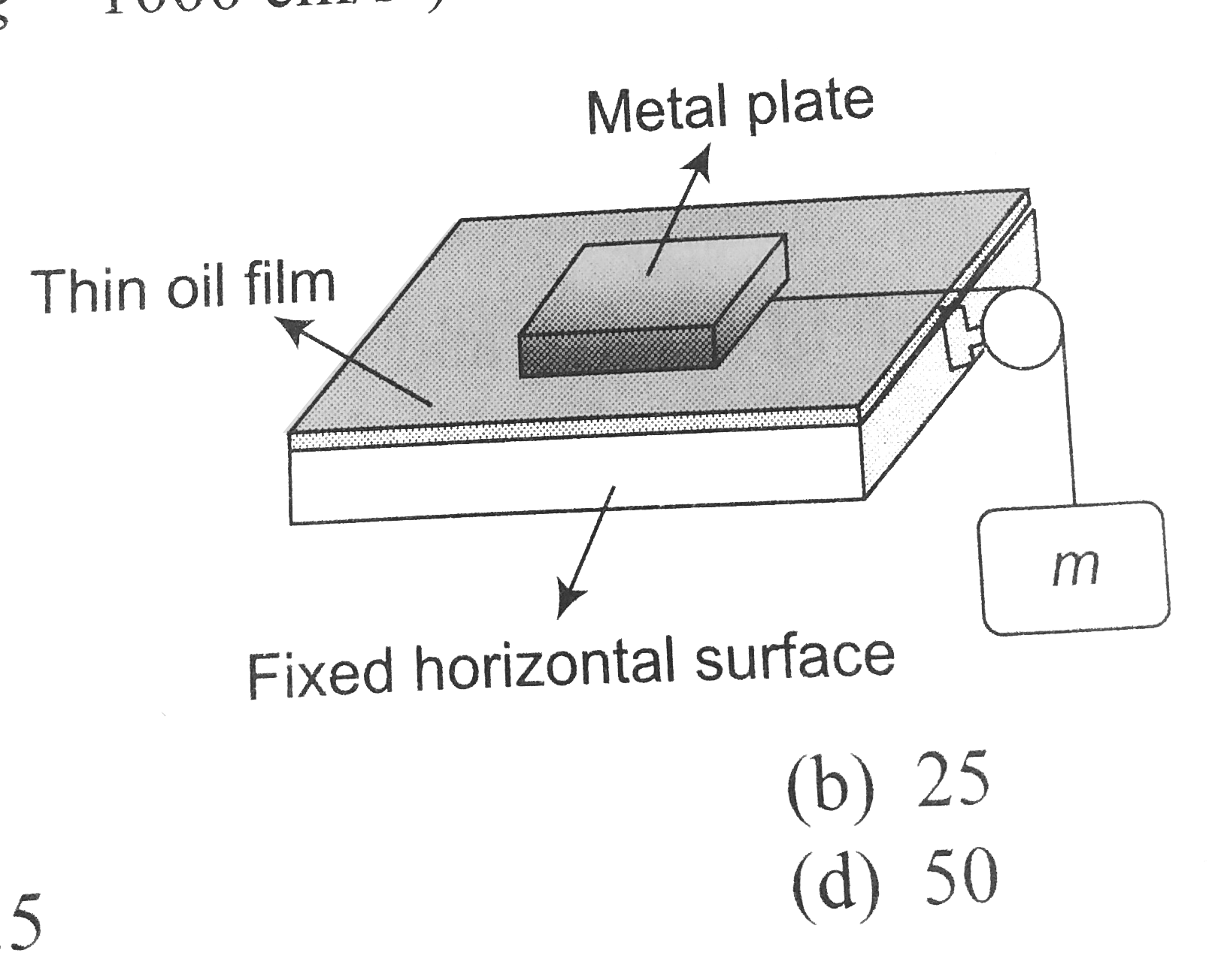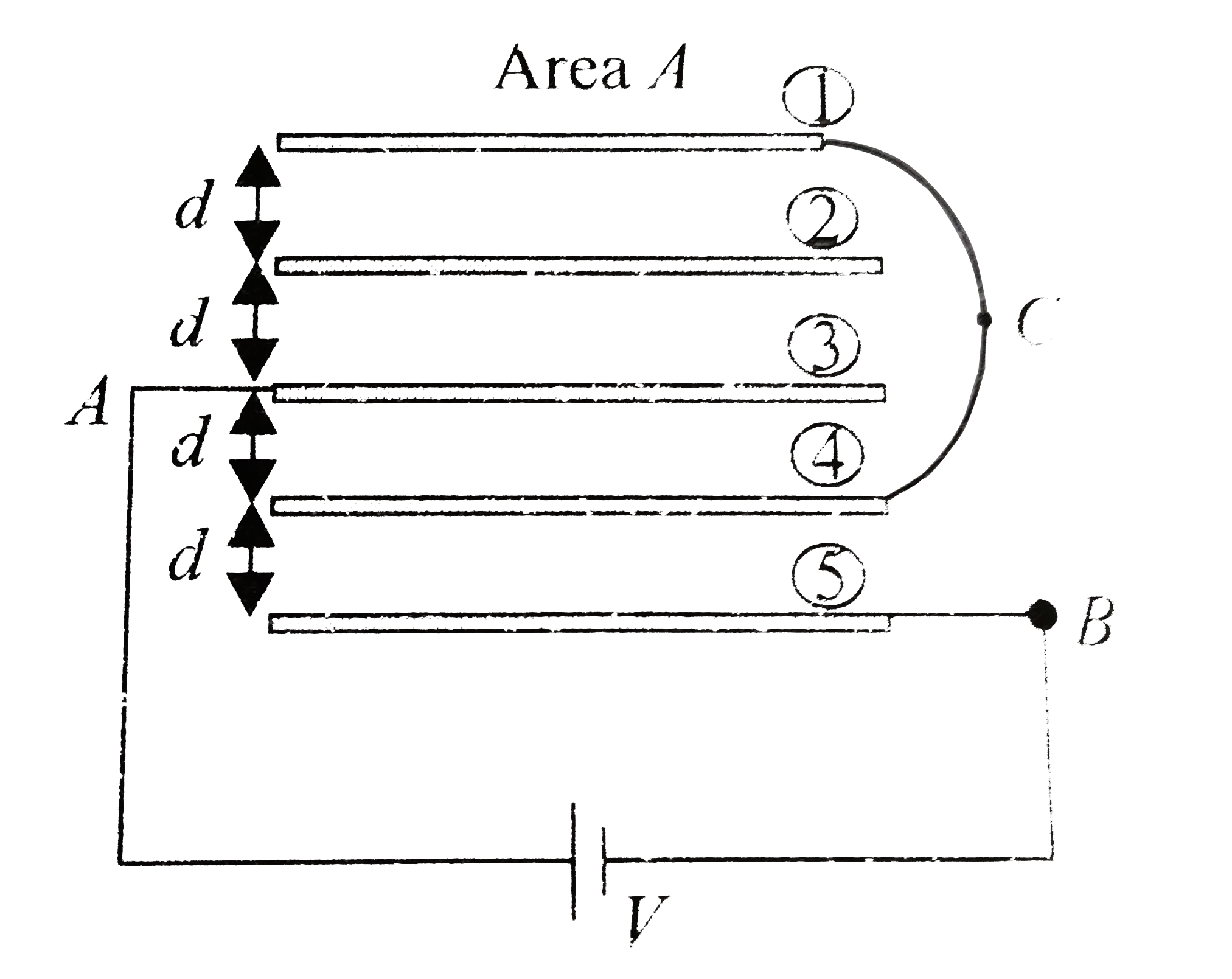
A rectangular metal plate has dimensions of 10cm×20cm. A thin film of oil separates the plate from a fixed horizontal surface. The separation between the rectangular plate and the horizontal surface is 0.2mm. An ideal string is attached to the plate and passes over an ideal pulley to a mass m. When m=125gm, the metal plate moves at constant speed of 5cms, across the horizontal surface. Then the coefficient of viscosity of oil in dy≠−scm2 is (Use g=1000cms2)
5
25
2.5
50
The correct Answer is:C
The coefficient of viscosity is the ration of tangential stress on top surface of film (exerted by block) to that of velocity gradient (vertically downwards) of film. Since mass m moves with constant velocity, the string exerts a force equal to mg on plate towards right. Hence oil shall exert tangential force mg on plate towards left.
η=FA(v−0)△x=125×10010×20(5−0)0.2
=2.5dynecm2
Topper's Solved these Questions
- PROPERTIES OF MATTERBook:A2ZChapter:PROPERTIES OF MATTERExercise:Problems Based On Mixed Concepts
Explore 34 Videos
- PROPERTIES OF MATTERBook:A2ZChapter:PROPERTIES OF MATTERExercise:Assertion Reasoning
Explore 20 Videos
- PROPERTIES OF MATTERBook:A2ZChapter:PROPERTIES OF MATTERExercise:Pressure Difference And Capillarity
Explore 23 Videos
- OSCILLATION AND SIMPLE HARMONIC MOTIONBook:A2ZChapter:OSCILLATION AND SIMPLE HARMONIC MOTIONExercise:Chapter Test
Explore 29 Videos
- ROTATIONAL DYNAMICSBook:A2ZChapter:ROTATIONAL DYNAMICSExercise:Chapter Test
Explore 29 Videos
Similar Questions
Knowledge Check
Area of a parallel plate capacitor of capacitance 2F and separation between the plates 0.5cm will be
A1.13×109m2B1.13×106m2C108m2D1.13m2
A space 2.5cm wide between two large plane surfaces is filled with oil. Force required to drag a very thin plate of area 0.5m2 just midway the surfaces at a speed of 0.5msec is 1N. The coefficient of viscosity in kg−sm2 is:A5×10−2B2.5×10−2C1×10−2D7.5×10−2A circular metal plate of radius 10 cm is given a charge of 20μC on its surface. The charge density of the plate is
A3.185×10−6C/m2B2×10−6C/m2C3×10−9C/m2D3.184×10−4C/m2
A uniform plate with a circular hole lies over a smooth horizontal surface. C is the center of the plate and X is at the edge of the plate,as shown.Now,if the temperature of the plate is increased
View SolutionA rectangular plate of dimension 6cm×4cm and thickness 2mm is placed with its largest face flat on the surface of water. Find the downward force on the plate due to surface tension. Surface tension of water is 7.0×10−2Nm−1.
View SolutionA rectangular glass plate of dimensions 5 cm × 4 cm is placed flat on the surface of water. Find the downward force on the plate due to surface tension. Given surface tension of water = 0.073 N m−1
View SolutionA metal plate ofarea 100 sq. cm, rests on a layer of oil 2mm thick. A force of 0.1 N applied parallel to the plate horizontally keeps it moving with uniform speed of 1cm/ s. What is the coefficient of viscosity of oil ?
View SolutionFive plates are arranged as shown in the figure and connected across a battery of emf V. The separation between each plate is d and surface area of each plate is A.

View Solution